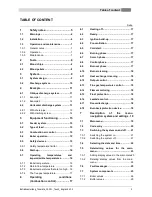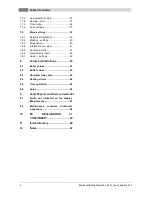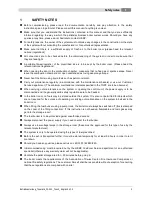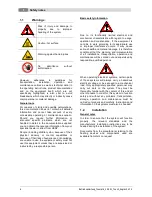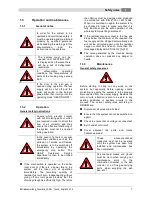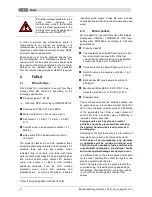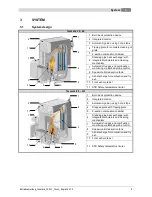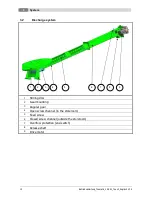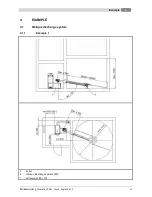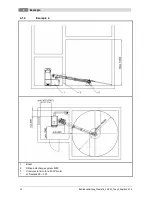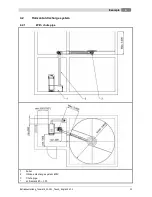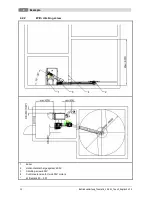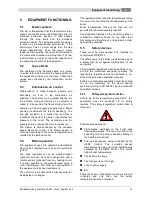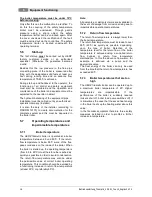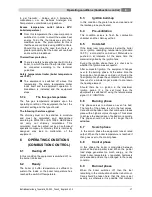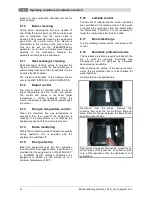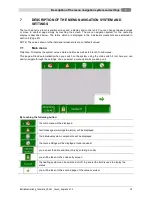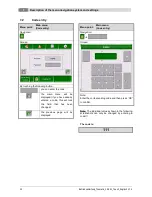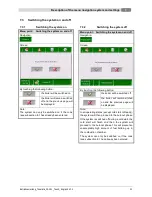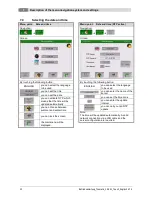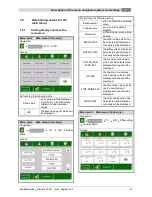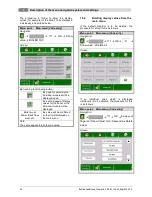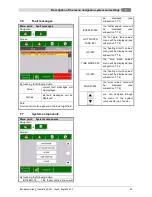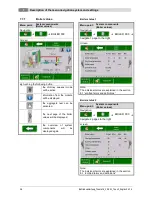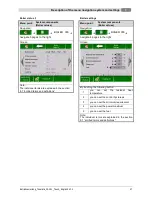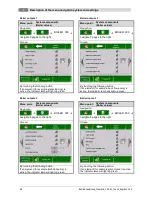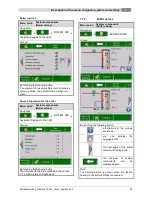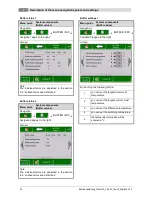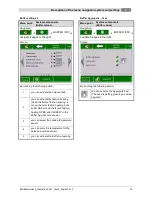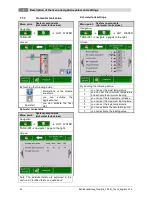
Operating conditions (Combustion control)
6
Betriebsanleitung_firematic_20-301_Touch_Englisch V1.2
17
In der firematic – Anlage sind 3 Sicherheits-
maßnahmen, um ein weiteres Ansteigen der
Temperatur zu unterbinden, vorgesehen:
Excess
temperature
outlet
(above
92°C
boilertemperature)
From this temperature the consumer pump is
switched on in order to divert the excess heat
energy. To do this, the loads are set to their
maximum value. The precondition for this is
that these are controlled using HERZ controls.
Should this not be the case then there is a
greater probability that the boiler will overheat
and result in a breakdown.
Thermal flow protection
There is a safety heat exchanger built into the
boiler, to which thermal flow protection must
be connected according to the technical
guidelines.
Safety temperature limiter (boiler temperature
over 95°C)
The equipment is switched off above this
temperature. The safety temperature limiter
locks itself and the equipment operation. A
breakdown is indicated and the equipment
stops.
5.7.4
The flue gas temperature
The flue gas temperature depends upon the
operating condition of the equipment, the fuel, the
ventilator setting and the type of boiler.
The following therefore applies:
The chimney must not be sensitive to moisture
and must be calculated and dimensioned
according to DIN 4705 or EN 13384. HERZ does
not
carry
out
chimney
calculations.
This
calculation must be carried out by an authorised
specialist company. A chimney that is incorrectly
designed may lead to malfunction of the
equipment.
6
OPERATING CONDITIONS
(COMBUSTION CONTROL)
6.1
Heating off
In this condition the equipment is switched off, i.e.
the burner is blocked.
6.2
Ready
The boiler or buffer temperature is sufficient to
sustain the loads or the boiler temperature has
reached the switch-off temperature.
6.3
Ignition build-up
In this condition the grate has been cleaned and
the lambda probe pre-heated.
6.4
Pre-ventilation
This condition serves to flush the combustion
chamber and the chimney with air.
6.5
Cold start
If the boiler room temperature is below the boiler
room ignition identifying temperature (standard
150 °C), a cold start is carried out. Materials are
pushed in at intervals. At the same time the
material is ignited by the ignition fans.
During the ignition phase there is a check as to
whether the ignition was successful.
After successful ignition, the equipment changes
over to the burning phase. At the same time the
final ignition fan phase is carried out. During the
final ignition fan phase the ventilator of the ignition
fans runs for a minute longer in order to cool down
the heating element.
Should there be no ignition in the maximum
ignition period (3 x the set time) then the
equipment is switched off using the remote status
signal => F: IGNITION.
6.6
Burning phase
This phase serves to achieve an even fire bed.
The length of the phase is set in the fuel values.
Care should be taken here that combustion takes
place with a higher surplus of oxygen. This serves
to achieve the desired even fire bed more quickly.
This phase should not be set for longer than 5
minutes.
6.7
Scorch phase
In the scorch phase the equipment runs at rated
output. When the boiler temperature is reached it
then goes over to the control phase.
6.8
Control phase
In this phase the boiler is modulated between
nominal load and partial load. When the partial
load stage generates too much energy, i.e. the
target boiler temperature + regulation hysteresis
are exceeded and are then changed to the ready
condition.
6.9
Burnout phase
When the boiler switches off, then the fuel
remaining in the combustion chamber is burnt out.
Care should be taken here that this time is set
exactly, as otherwise it is possible that material

